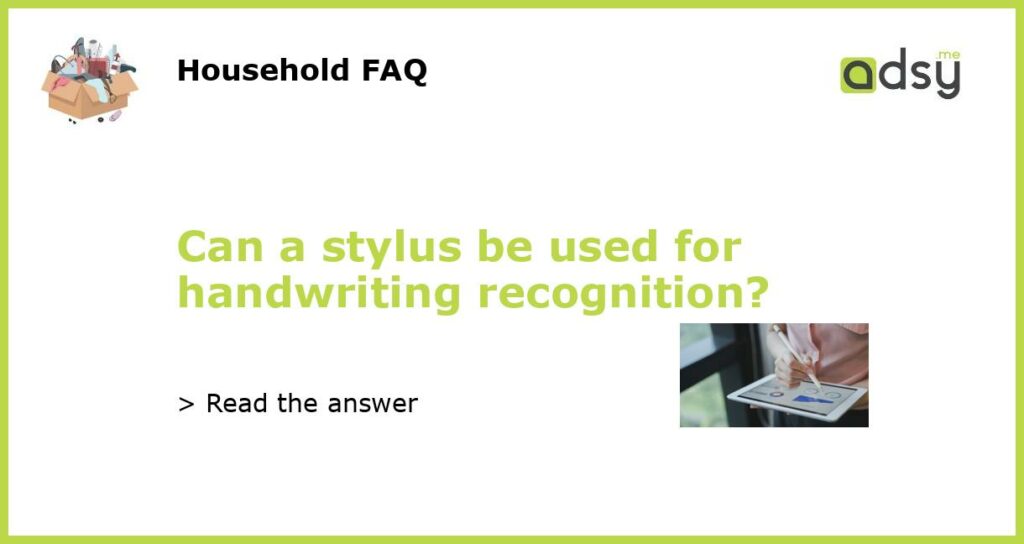Yes, a stylus can be used for handwriting recognition.
Handwriting recognition technology has come a long way in recent years, and using a stylus is one of the ways in which people can input their handwritten notes into digital devices. A stylus is a pen-like device that allows users to write directly on a touch-screen display. This input method not only makes it easier for users to write naturally, but it also enables the device to recognize and convert the handwritten text into digital text, which can be easily searched, edited, and shared.
How does handwriting recognition work?
Handwriting recognition technology uses a combination of hardware and software to analyze the strokes made by the stylus on the touch screen. The hardware component consists of a touch-sensitive screen that can detect the position and movement of the stylus. The software component consists of algorithms that analyze the shape and trajectory of the strokes to determine the corresponding characters or words.
The first step in handwriting recognition is the acquisition of the analog input. The touch-screen display captures the precise position and movement of the stylus as it is being used to write on the screen. This input is then converted into digital data that can be processed by the software.
The second step is the segmentation of the input into individual characters or words. The software analyzes the strokes made by the stylus and separates them into the different characters or words that were written. This segmentation process is essential for the recognition of handwritten text, as it allows the software to analyze each individual element separately.
The third step is the recognition of the characters or words. The software uses a variety of algorithms and models to determine the most likely match for each individual element. These algorithms take into account factors such as stroke order, stroke direction, and stroke shape to make the most accurate recognition possible.
What are the benefits of using a stylus for handwriting recognition?
Using a stylus for handwriting recognition offers several benefits compared to other input methods, such as typing on a virtual keyboard or using voice recognition. Firstly, it allows users to write naturally and comfortably, just like they would with pen and paper. This can be particularly useful for tasks that involve drawing or sketching, as it allows for precise and accurate input.
Secondly, handwriting recognition with a stylus provides a level of privacy and security that other input methods may not offer. Unlike voice recognition, which can be overheard by others, or typing on a virtual keyboard, which leaves a digital trail, handwriting input remains private and secure.
Finally, using a stylus for handwriting recognition offers the possibility of multi-modal input. This means that users can combine handwriting input with other input methods, such as voice or gesture, to enhance the user experience and improve productivity. For example, a user could write a note with a stylus, then use voice commands to create a reminder or send an email based on the content of the note.
What devices support handwriting recognition with a stylus?
Handwriting recognition with a stylus is supported on a wide range of devices, including smartphones, tablets, and convertible laptops. Most major operating systems, such as iOS, Android, and Windows, have built-in support for handwriting recognition, allowing users to write directly on the screen with a stylus or their finger.
There are also dedicated stylus devices, such as the Apple Pencil for the iPad or the Microsoft Surface Pen for Surface devices, that offer enhanced functionality and precision for handwriting recognition. These devices often come with additional features, such as pressure sensitivity or tilt detection, that can further improve the accuracy and naturalness of the handwriting input.


![Jsdoin Pen [10 Pack] Multiple Colors Universal Capacitive Touch Screen Pens for iPad,Tablets, Pad Mini, iPad Pro, iPad Air, Samsung Galaxy with Ultra-Sensitive, Precision Writing and Drawing](https://m.media-amazon.com/images/I/51JeQejNMzL.jpg)



